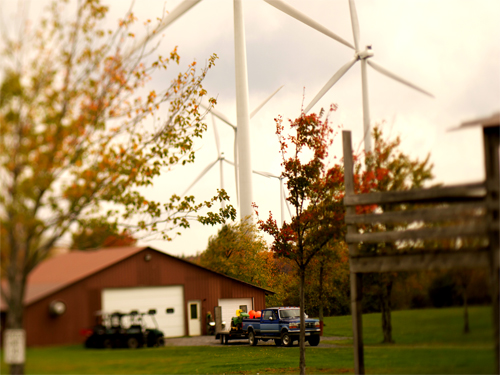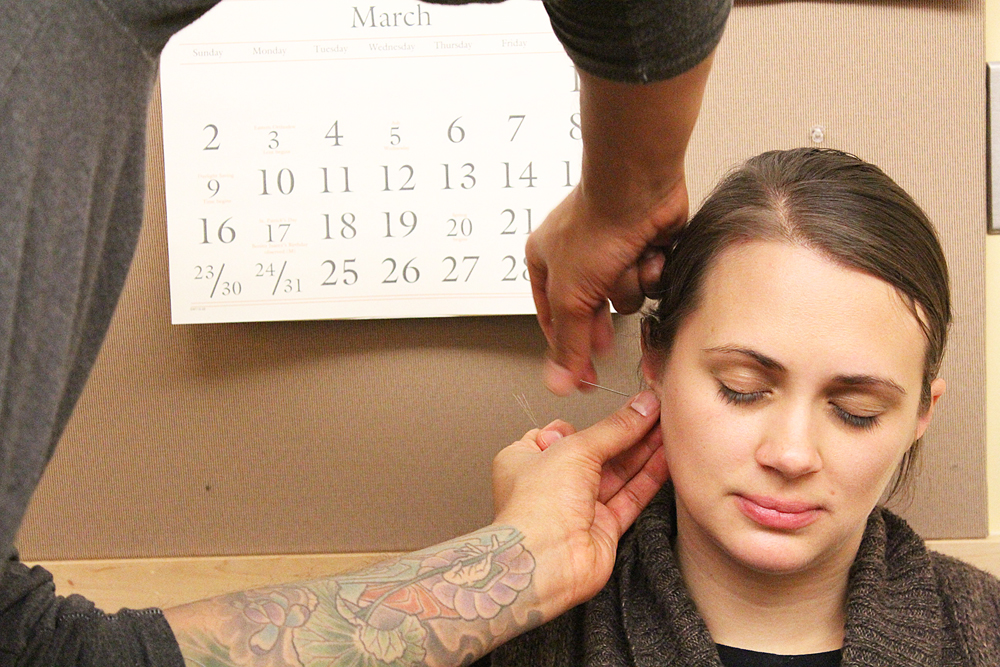Upon entering Joel Garcia’s art studio on campus, vibrant figures dance off the wall on one side while solemn Hispanic leaders lie quietly on the other. Stark contrasts have been in Garcia’s artwork since he was in grade school. His first drawing was a card for his mother on Valentine’s Day, with a sweet message written in Spanglish.
Bridges and murals
Upon entering Joel Garcia’s art studio on campus, vibrant figures dance off the wall on one side while solemn Hispanic leaders lie quietly on the other. Stark contrasts have been in Garcia’s artwork since he was in grade school. His first drawing was a card for his mother on Valentine’s Day, with a sweet message written in Spanglish. Garcia finds meaning in the space between cultures and expresses that spirit in his optimistic paintings and photographs.
Cans of spray paint were Garcia’s introduction to art. Even though the elite don’t see graffiti as art, Garcia developed a life-long fascination with public art that engages ordinary people on the streets. Images of Puerto Rican heroes were imprinted on his memory from the abundant murals he saw while growing up in Chicago’s Humboldt Park.
Garcia has a bittersweet feeling about his hometown, as the demographic of his neighborhood shifts. In the early-90s it was 64 percent Puerto Rican and now it is only 40 percent. As Puerto Ricans become the minority, the familiar air he grew up with is evaporating in favor of urban anonymity. Blank stares are replacing the warm invitations that held the community together.
Garcia is first Puerto Rican and secondly American. His relatives are subsistence farmers in San Lorenzo, living close to nature with fruits and animals. For Garcia, his roots provide infinite creative sustenance and inspire countless new works of art. The Taino natives who inhabited the Puerto Rican island before it was colonized inspire Garcia profoundly. The artistic traditions of his ancestors influence Garcia’s contemporary work.
On the surface some Puerto Ricans may be dark-skinned with Afros while others have blond hair and blue eyes, but color is not what makes someone Puerto Rican. Their culture springs from the inside: coming together over a cup of coffee, talking about the day, gossiping and sharing stories. Puerto Rican culture cherishes family, music, dance and art.
The cultural riches of Puerto Rico include poets such as Jose de Diego, who was heavily involved in politics and advocated independence for Puerto Rico. The intellectual Pedro Albizu Campos went to Harvard Law, spoke seven languages, but was persecuted by the mainland when he spoke out for Puerto Rican independence. Julia de Burgos is the best-known female poet who eloquently captures the essence of what it means to be Puerto Rican.
Diverse cultural roots are what make American society truly unique–but black, Hispanic, and Asian leaders are not represented here the way they are in other cities. When Garcia moved to Portland to attend the M.F.A. program, he was forced to define himself in ways he had previously taken for granted. He soon imagined colorful murals filling the city’s walls indoors and out. This work serves as a bridge connecting people in Portland with diverse cultures and world traditions.
With an old slide projector and a set of fresh images in hand, he set out on campus to shine the light of creativity on unconventional corners and brick buildings. As Garcia’s studio work enlivened cement walls and video game screens, the seeds of culture were sown. In the near future Garcia envisions the project growing to the point where his pictures will cover entire buildings downtown.
The city of Portland can use all the injections of global culture it can get. The fleeting images conveyed the essence of Garcia’s creative vision, engaging the public with questions rather than answers. Why should art hang in museums and galleries? What is the meaning of a multi-cultural society? How do you define your culture? Ultimately the project embodies Garcia’s underlying philosophy, “Art should not just be for the elite, art should reach the masses.”
If someone who sees the projections stops to consider their own cultural background, Garcia’s project will be a success. We can all benefit from a little more introspection and pauses to acknowledge where we come from. Garcia’s optimism pours over the brim while asking, “Who is your Malcolm X?” It is important for people of all backgrounds to discover their role models so they can make a positive impact on the world.




